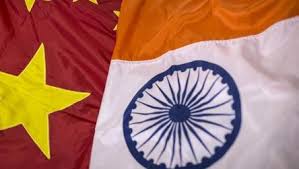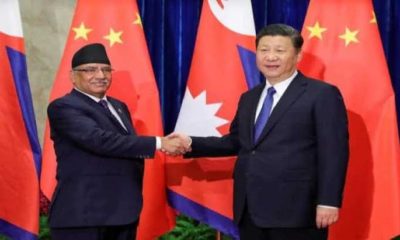World
Nepal’s inflation rate reached seven-year high of 12.1 percent

 Kathmandu:Nepal’s inflation rate reached nearly seven-year high of 12.1 percent in January due to prolonged strikes in the Tarai region and disruption on trade routes in the southern parts of the country, the country’s central bank said on Sunday.
Kathmandu:Nepal’s inflation rate reached nearly seven-year high of 12.1 percent in January due to prolonged strikes in the Tarai region and disruption on trade routes in the southern parts of the country, the country’s central bank said on Sunday.
It is the first time that inflation in Nepal crossed 12 percent after June 2009, according to Nepal Rastra Bank (NRB), the central bank of the country.
The last time when inflation was higher than now was in May 2009 when it stood at 12.4 percent, Xinhua news agency reported.
Nepal faced four and half month long blockade in its southern border crossings causing supply disruptions not only of imported goods but also the delivery of goods within the country due to shortage of fuel.
Nara Bahadur Thapa, chief of research department at NRB said supply constraints created gap between demand and supply causing double digit inflation. Most of the food items witnessed double digit price rises in January with prices of pulses and cooking oil spiking the most.
Pulse price soared by 46.9 percent, which according to Thapa, is due to supply constraints as well as its soaring prices in India where its production decreased massively in 2015.
Likewise, prices of cooking oil soared by 31.3 percent due to disruption in supply of its raw materials which are imported from far away countries like Argentina and Brazil, according to NRB.
From among the non-food items, prices of clothes and footwear soared highest of 13.7 percent. Their prices increased massively as delivery of cheaper Chinese footwear and garments to Nepal was disrupted from both land and sea route, said Thapa.
Usually, Nepalese traders import cheaper Chinese goods through bordering Chinese Khasa market but the road reaching there from Kathmandu has not been operational since deadly earthquake hit the area last year.
Supply of these goods through the sea route was also disrupted due to obstruction in Nepals southern border crossings, said Thapa.
World
Lockdowns in China Force Urban Communities to Defy Censorship and Vent Frustration Online

Shanghai’s rich middle class is leading a wave of online dissent over the strict and prolonged lockdowns imposed in various parts of the country. Chinese internet censorship is struggling as patience is wearing thin in many urban centers, coming up with creative forms of online protests.
Social Media Posts Revealing Lockdown Tension in Shanghai
Drawn-out lockdowns are nothing new in China as authorities insist with the nation’s zero-Covid policy since the start of the pandemic. Currently over This time around, however, metropolitan areas like Shanghai are increasingly difficult to keep quiet, given that its more than 25 million residents have seen weeks of total isolation along with food shortages and many other service interruptions.
Dozens of towns and reportedly over 300 million Chinese citizens have been affected by lockdowns of different severity. As expected, urban netizens have been most outspoken over their difficulties by finding creative ways to get around state censorship and bans placed on topics, news comments and spontaneous campaigns.
Shanghai residents have been using mobile proxies and hijacking seemingly unrelated hashtags to talk about healthcare issues, delivery failures and the overall severity of their situation. The “positive energy” that the Chinese government wants to transmit during the recent prolonged series of lockdowns does not come naturally to those counting food supplies and online censors are working hard to filter words, trending topics and undesired social media sharing.
WeChat groups and message threads are under constant monitoring. Posts questioning the zero-Covid approach have been quickly deleted, including by leading Chinese health experts like Dr. Zhong Nanshan. Video footage is soon censored and protests and investigations are quickly made to disappear.
Where this has not worked, officials have exposed banners with warnings and outright threats like “watch your own mouth or face punishment”, while drones have been patrolling the city skies. Yet, if anything, this has led to further tensions and unspoken confrontation with Shanghai’s educated and affluent middle class.
Creative Online Solutions Harnessing Civic Energy
Announcements by Chinese social media that they would be publishing the IP addresses of users who “spread rumors” have not helped either. Tech industry research has shown that much of Asia’s tech-savvy population has a habit of using mobile proxies and other privacy tools, quickly finding workarounds to browse the internet freely and talk to the world about the hottest topics.
The sheer volume of forbidden posts is already a challenge for the very censorship system, experts explain. Unable to track all trending hashtags, state workers overlook topics that speak about the US, Ukraine or other popular news. Linking human rights elsewhere to their situation, Chinese online dissidents establish their informal channels and “hijack” the conversation to share personal or publicly relevant information about the Covid suppression in their town.
Sarcastic and satirical posts still dominate. Others hope to evade the censors by replacing words from famous poems or the national anthem. One thing is certain – social media, when harnessed with the right creativity, has proven its ability to mount pressure on the government in even some of the most strictly controlled tech environments like China.























